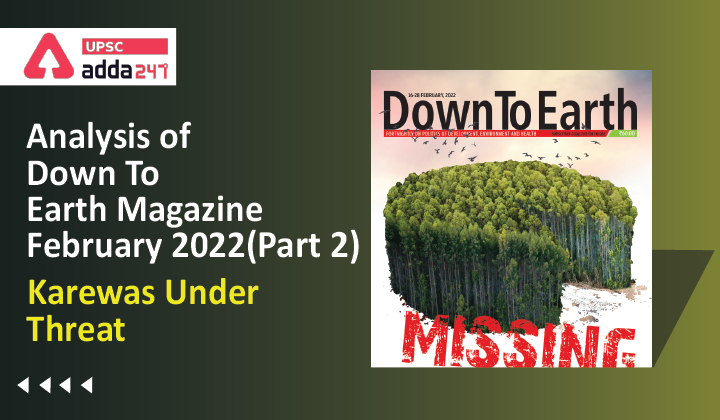Analysis of Down To Earth Magazine: Karewas Under Threat
Relevance
”GS 3: Climate Change, Environmental Pollution & Degradation”
Introduction
- The Kashmir valley is an oval-shaped basin.
- It is an intermountain valley fill, comprising of unconsolidated gravel and mud. A succession of plateaus is present above the Plains of Jhelum and its tributaries.
- These plateau-like terraces are called Karewas or Vudr in the local language.
- These plateaus are 13,000- 18,000 m-thick deposits of alluvial soil and sediments like sandstone and mudstone.
- Anthropogenic erosion for a couple of years has reduced these plateau lands into ugly ravines.
Key Concern
- People in the area destroying these Karewa(highlands)/tablelands at the cost of development ignoring the geological and aesthetic significance of these formations.
- The rich fertile soil is being used for landfill purposes at construction sites which is not only wastage of resource, but a threat taking into account the high seismic zone our Valley falls into.
Ecological Harm
- The destruction of the karewas has also led to the enormous accumulation of silt in the Jhelum river, which runs parallel to the Pir Panjal, and its 42-km-long flood spill channel that runs between Padsha- hi Bagh in the outskirts of Srinagar and Wular lake in north Kashmir through Hokersar wetland reserve.
- Siltation occurs due to the degradation of catchment areas, which is caused by deforestation and changes in land use, such as clay mining.
- This has reduced the capacity of the flood spill channel from 481,440 litres of water per second to 169,920 litres per second. As a result, the capital city experienced massive floods in 2014, after a break of almost nine decades.
Home To Unique Biodiversity
- The karewas are home to unique biodiversity.
- The famous almond orchids are best grown in the soils of karewas.
- In fact, the agriculture of the valley dominantly survives and sustains on Karewa soils.
- They are ideal for the cultivation of saffron, almonds, apples and several other cash crops.
- The world-famous saffron from Pampore and apples from Shopian are best examples.
Way Forward
- We can’t afford to see our national heritage plundered and thus the Govt must immediately call upon NHAI to ensure no soil excavation is done around Karewas during Ring Road construction.
- Let the Govt explore soil excavation from flood spill channel and wullar embankments which is the need of the hour.
- These places need immediate desilting as the same will save us from floods as well. Even if the muck or silt is having moisture content in it , let the same be dumped at various locations so that it gets dry and can be used later on.
- United Nations Educational, Scientific and Cultural Organization (UNESCO) has designated Srinagar as a part of UNESCO Creative Cities Network (UCCN), it is the duty of the Govt to ensure every bit of heritage in and around Srinagar is protected. This includes Karewas as well.
Conclusion
We need to preserve this geological treasure and legacy for generations to come. Government has to give special attention for preventing the destruction of these special treasures of Kashmir; else the results will be deleterious in the future.



 TSPSC Group 1 Question Paper 2024, Downl...
TSPSC Group 1 Question Paper 2024, Downl...
 TSPSC Group 1 Answer key 2024 Out, Downl...
TSPSC Group 1 Answer key 2024 Out, Downl...
 UPSC Prelims 2024 Question Paper, Downlo...
UPSC Prelims 2024 Question Paper, Downlo...





